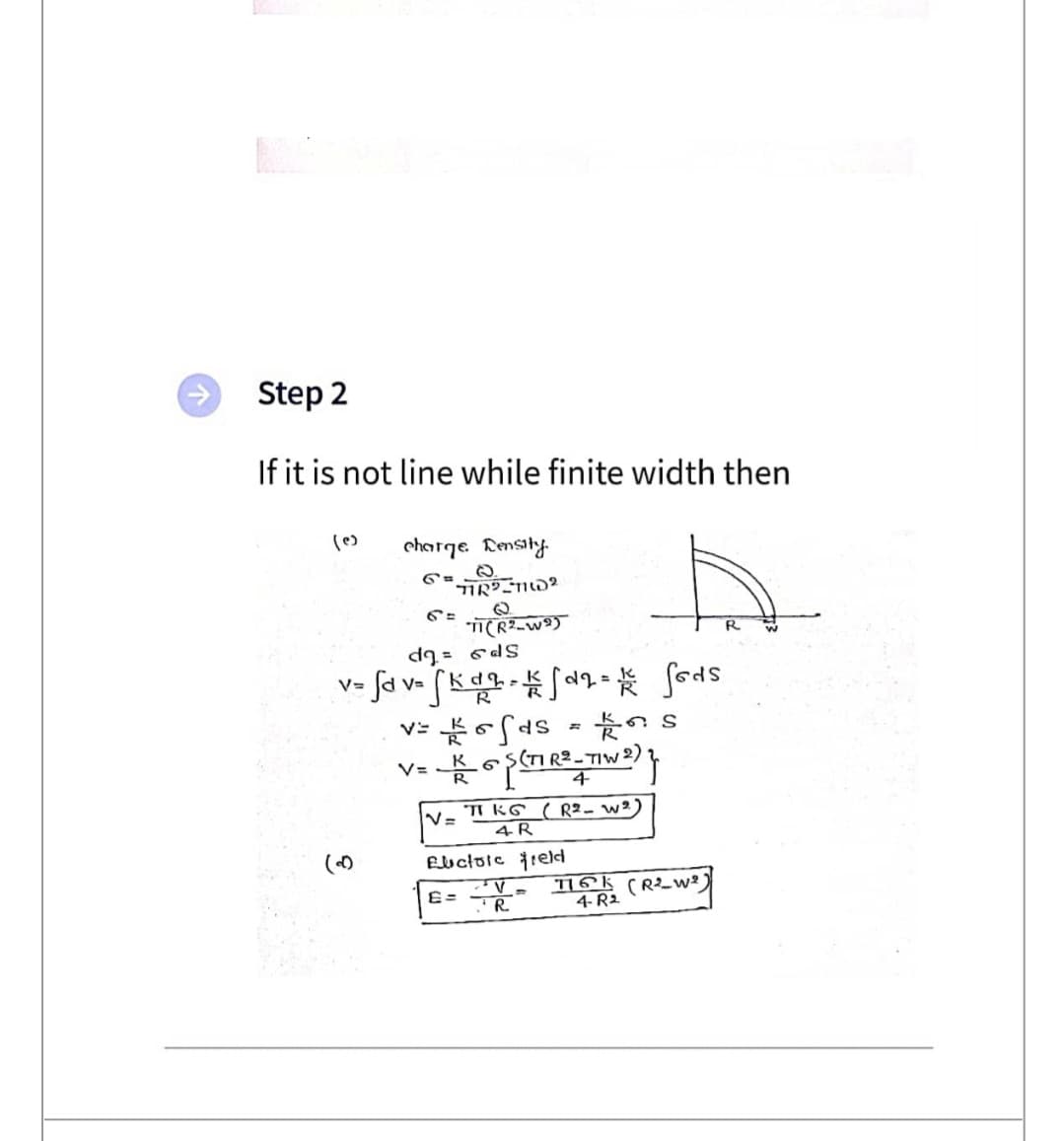A thin wire, carrying a positive and uniform linear charge density 2, is bent into a quarter-circle with a radius R, as shown in the figure. (a) Derive the electric potential at the center of the circle. (b) USE the result in part (a), calculate the electric field at the center. (c) If the line is not thin, but has a finite width w (as shown in the second diagram), what would the electric potential at the center be? (d) Derive the electric field
A thin wire, carrying a positive and uniform linear charge density 2, is bent into a quarter-circle with a radius R, as shown in the figure. (a) Derive the electric potential at the center of the circle. (b) USE the result in part (a), calculate the electric field at the center. (c) If the line is not thin, but has a finite width w (as shown in the second diagram), what would the electric potential at the center be? (d) Derive the electric field
Related questions
Question
100%
Bartley expert give me wrong solution plz solve this problem correctly all parts will definitely upvote and give positive feedback
![A thin wire, carrying a positive and uniform linear
charge density 2, is bent into a quarter-circle with a
radius R, as shown in the figure. (a) Derive the electric
potential at the center of the circle. (b) USE the result
in part (a), calculate the electric field at the center. (c)
If the line is not thin, but has a finite width w (as
shown in the second diagram), what would the electric
potential at the center be? (d) Derive the electric field
of this thick quarter-circle at the center, assuming the
charge density is still uniform.
(9)
We have given a quarter circle with radius R
having uniform linear charge density Lamda.
charge Density =
λ
20
4
(STR) TIR
dq=1dx
dg= 22dx
TIR
211R
dv=f_kd₂
R
av = kg = √2/²
TIR
v= [av = 1/2 (²02) 50
R
V=
v= √dv=2k [x] 27²
4
2KQ
AR₂
V=
KB
V= K
R2
R²
x 24
£=
X
V= KA
2R
2TIR
AR
4.dx
Electorc freeld £=-V
dR
K
2R2
R
R
Q = AⓇ
KA(-1)
2R2](/v2/_next/image?url=https%3A%2F%2Fcontent.bartleby.com%2Fqna-images%2Fquestion%2Ffd53c981-d3fb-4d86-b451-2d7f878ea24b%2F656c7270-fd5b-41e5-87fb-214223c7fdd3%2F62tf8co_processed.jpeg&w=3840&q=75)
Transcribed Image Text:A thin wire, carrying a positive and uniform linear
charge density 2, is bent into a quarter-circle with a
radius R, as shown in the figure. (a) Derive the electric
potential at the center of the circle. (b) USE the result
in part (a), calculate the electric field at the center. (c)
If the line is not thin, but has a finite width w (as
shown in the second diagram), what would the electric
potential at the center be? (d) Derive the electric field
of this thick quarter-circle at the center, assuming the
charge density is still uniform.
(9)
We have given a quarter circle with radius R
having uniform linear charge density Lamda.
charge Density =
λ
20
4
(STR) TIR
dq=1dx
dg= 22dx
TIR
211R
dv=f_kd₂
R
av = kg = √2/²
TIR
v= [av = 1/2 (²02) 50
R
V=
v= √dv=2k [x] 27²
4
2KQ
AR₂
V=
KB
V= K
R2
R²
x 24
£=
X
V= KA
2R
2TIR
AR
4.dx
Electorc freeld £=-V
dR
K
2R2
R
R
Q = AⓇ
KA(-1)
2R2

Transcribed Image Text:Step 2
If it is not line while finite width then
(e)
charge Density.
TIR-TE2
6= -1 (1-1)
dq=&ds
V=
= √d v= √k³2= K √α2= K fods
(8)
|V=
V=Kods
V=-R55 (TIR²_TIW2) }
4
Ebctoic field
E =
T
ko
6 S
TI KG (R2- w2
4 R
V- ゴの
R
4-R2
(R²_W²)
R
Expert Solution
This question has been solved!
Explore an expertly crafted, step-by-step solution for a thorough understanding of key concepts.
Step by step
Solved in 3 steps
